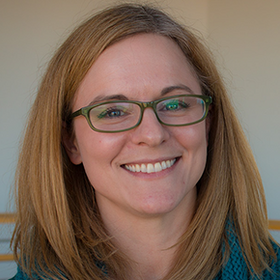

420 Washington Avenue SE
Minneapolis, MN 55455
United States
Laurie
Parker
The Parker lab focuses on assay development for post-translational modifications, with an emphasis on protein phosphorylation by tyrosine kinases. Our team uses chemical biology and proteomics to develop tests to quickly screen for better inhibitor drugs, and/or determine effectiveness of inhibitors to improve patient outcomes during cancer treatment.
Research statement
Our research program is broadly directed at assay development for post-translational modifications (PTMs), with a focus on protein phosphorylation by tyrosine kinases. Protein tyrosine kinases play key roles in disease and are particularly important in cancer: mutations in several protein tyrosine kinase genes have been identified as drivers of many tumor types and drugs targeted at inhibiting these enzymes represent ~20% (>$9 billion) of the current oncology market. We use a “decoy” substrate biosensor approach (funded initially by a K99/R00 award from the NCI) in which an artificial, optimized substrate peptide is designed to report the activity of a specific enzyme in living cells. Delivery is achieved using cell-penetrating peptides, and enzymatic modification is measured using a range of readout strategies—some that require extraction of the cell contents and some that leave the cell intact. Targeting the function of the enzyme in its intracellular environment preserves protein-protein interactions, localization, and scaffolding-dependent activation, and decoy substrates provide a snapshot of enzymatic activity that circumvents the need for pre-knowledge of every endogenous substrate site. We also develop multiplex-compatible readouts, so we can use a suite of biosensors for different enzymes in order to profile pathways. We have established our approach and laid the groundwork of a substrate development workflow to expand our repertoire of biosensors for kinases and other enzymes. Long term, our lab will maintain a pipeline of biosensor and read-out technology development while also taking an active role in studying signaling biology with our tools.
Selected publications
Jena, S., Damayanti, N.P., Tan, H.J., Pratt, E., Irudayaraj, J.M.K., Parker, L.L. “Multiplexable fluorescence lifetime imaging (FLIM) probes for Abl and Src-family kinases.” Chem Commun, 56, 13409-13412 (2020)
Kruk, M., Widstrom, N., Jena, S., Wolter, N. L., Blankenhorn, J. F., Abdalla, I., Yang, T. Y., Parker, L. L., “Assays for tyrosine phosphorylation in human cells.” Methods Enzymol 626, 375-406 (2019)
Marholz, L. M., Yang, T.Y., Parker, L.L. “Peptide biosensors in chemical proteomics,” in “Mass Spectrometry-based Chemical Proteomics,” edited by W. Andy Tao, publisher: Wiley, (2019)
Noel, B.M., Ouellette, S.B., Navis, C., Marholz, L.J., Yang, T.Y., Nguyen, V., Parker, S.J., Sachs, Z., Parker, L.L. “Multi-omic profiling of TKI resistant K562 cells suggests metabolic reprogramming to promote cell survival,” Journal of Proteome Research, 18(4), 1842-1856 (2019)
Perez, M., Blankenhorn, J., Murray, K., Tao, W.A., Parker, L.L. “High-throughput Identification of FLT3 Wild-type and Mutant Kinase Substrate Preferences and Application to Design of Sensitive In Vitro Kinase Assay Substrates,” Molecular and Cellular Proteomics, 18(3) 477-489 (2019)
Marholz, L.J., Zeringo, N.A., Lou, H.J., Turk, B.E., Parker, L.L. “In silico design and in vitro characterization of universal tyrosine kinase peptide substrates.” Biochemistry, 57(12) pp. 1847-1851 (2018)
Ouellette, S.B., Noel, B.M., Parker, L.L. “A cell-based assay for measuring endogenous Bcr-Abl kinase activity and inhibitor resistance,” PLOS One 11(9):e0161748 (2016)
Cui, W., Parker, L.L. “Modular, Antibody-free Time-Resolved LRET Kinase Assay Enabled by Quantum Dots and Tb(3+)-sensitizing Peptides,” Sci Rep. 6:28971 (2016)
Lipchik, A. M., Perez, M., Cui, W., Parker, L.L. “Multicolored, Tb(3+)-Based Antibody-Free Detection of Multiple Tyrosine Kinase Activities.” Analytical Chemistry, 87 (15), 7555-7558 (2015)
Lipchik, A.M., Perez, M., Bolton, S., Dumrongprechachan, V., Ouellette, S.B., Cui, W., Parker, L.L. “KINATEST-IDTM: A pipeline to develop phosphorylation-dependent terbium-sensitizing kinase assays,” Journal of the American Chemical Society, 137 (7), 2484-2494 (2015)
Cui, W., Parker, L.L. “A Time-Resolved Luminescence Biosensor Assay for Anaplastic Lymphoma Kinase (ALK) Activity,” ChemComm, 51(2), 362-365 (2015)